 |
|
Parker Solar Probe (Delta IV Heavy) 12 August 2018 |
Space Launch Complex 37 Cape Canaveral Air Force Station |
A United Launch Alliance Delta IV Heavy rocket launched NASA's Parker Solar Probe on 12 August 2018 at 3:31 a.m. from Space Launch Complex 37 at Cape Canaveral Air Force Station. Excerpts from ULA and NASA press releases: A United Launch Alliance (ULA) Delta IV Heavy rocket will deliver NASA's Parker Solar Probe to an interplanetary trajectory to the sun. NASA selected ULA's Delta IV Heavy for its unique ability to deliver the necessary energy to begin the Parker Solar Probe's journey to the sun. The Parker Solar Probe will make repeated journeys into the sun's corona and trace the flow of energy to answer fundamental questions such as why the solar atmosphere is dramatically hotter than the sun's surface, what accelerates the solar wind that blows outward through the solar system and what is the source of high-energy solar particles. Parker Solar Probe will make 24 elliptical orbits of the sun and use seven flybys of Venus to shrink the orbit closer to the sun during the seven-year mission. The probe will fly seven times closer to the sun than any spacecraft before, a mere 3.9 million miles above the surface which is about 4 percent the distance from the sun to the Earth. At its closest approach, Parker Solar Probe will reach a top speed of 430,000 miles per hour or 120 miles per second, making it the fastest spacecraft in history. The incredible velocity is necessary so that the spacecraft does not fall into the sun during the close approaches. Temperatures will climb to 2,500 degrees Fahrenheit, but the science instruments will remain at room temperature behind a 4.5-inch-thick carbon composite shield. The mission was named in honor of Dr. Eugene Parker, an astrophysicist who discovered the solar wind in 1958. DELTA IV HEAVY This Delta IV Heavy is comprised of three common core boosters each powered by an Aerojet Rocketdyne (AR) RS-68A liquid hydrogen/liquid oxygen engine, producing a combined total of more than 2.1 million pounds of thrust. The second stage is powered by an AR RL10B-2 liquid hydrogen/liquid oxygen engine. Due to the extremely high energy required for this mission, the Delta IV Heavy's capability will be augmented by a powerful third stage provided by Northrop Grumman. |
|
 |
|
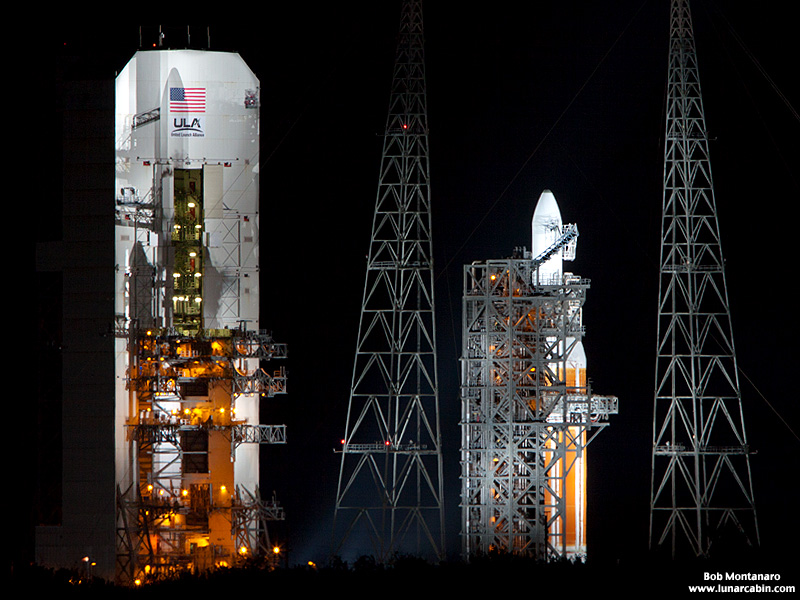 |
|
 |
|
 |
|
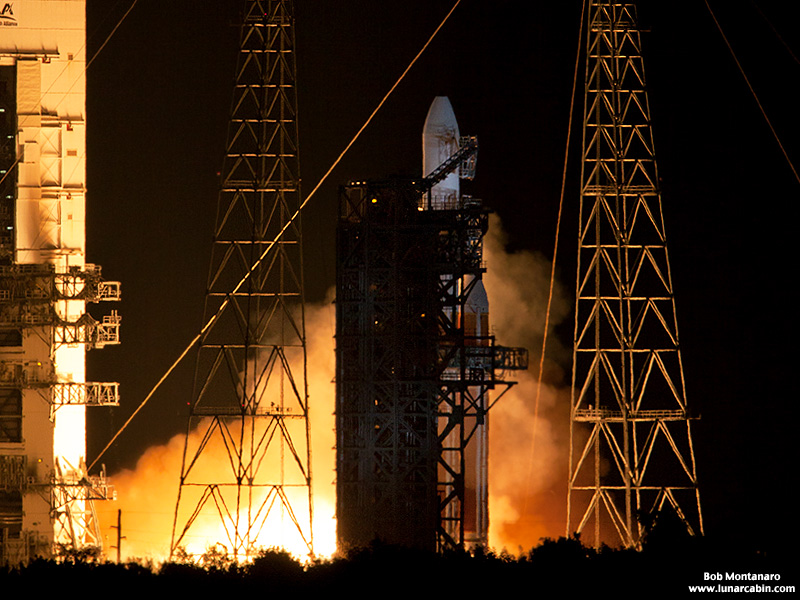 |
|
 |
|
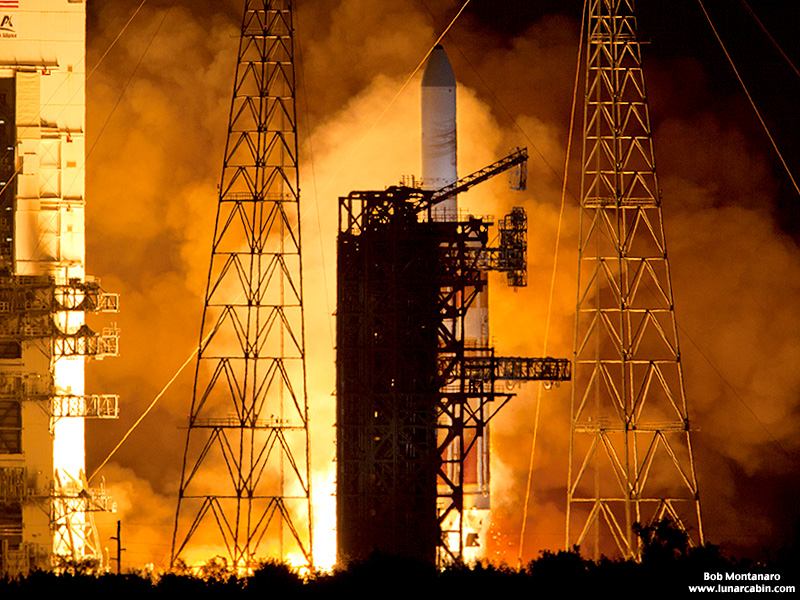 |
|
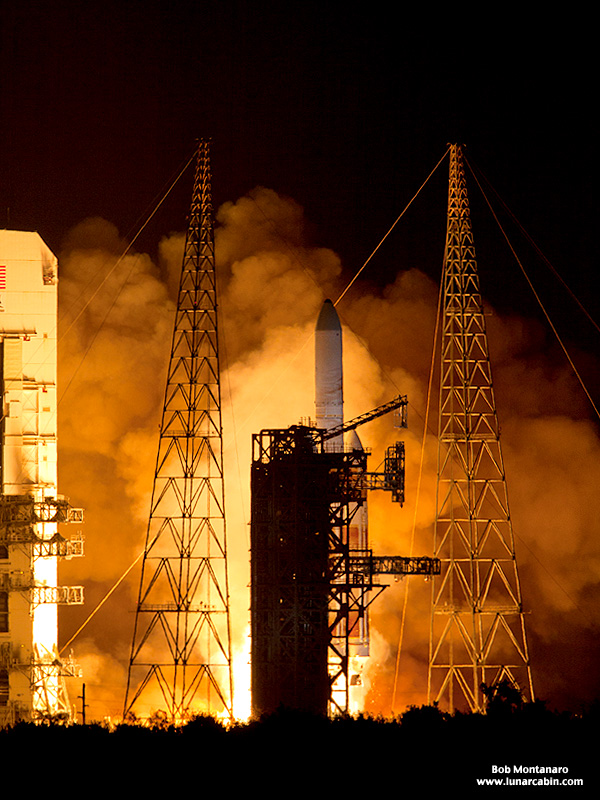 |
|
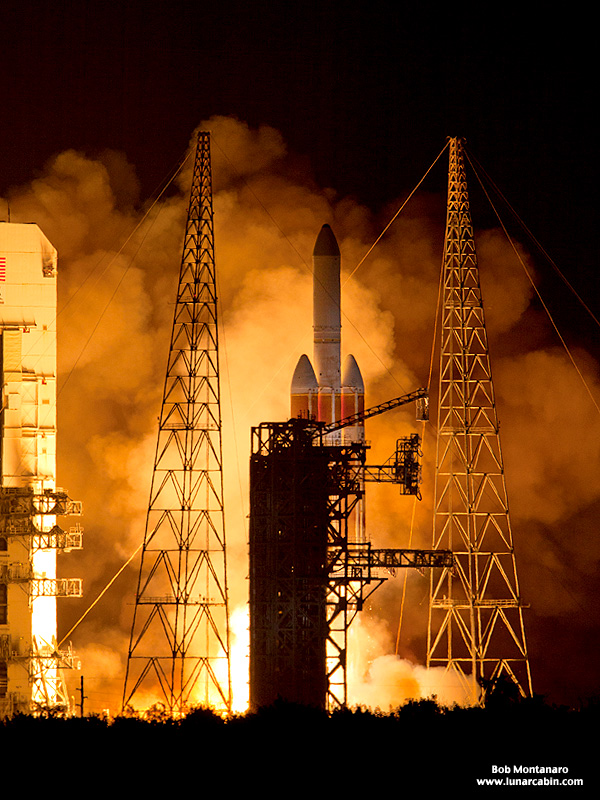 |
|
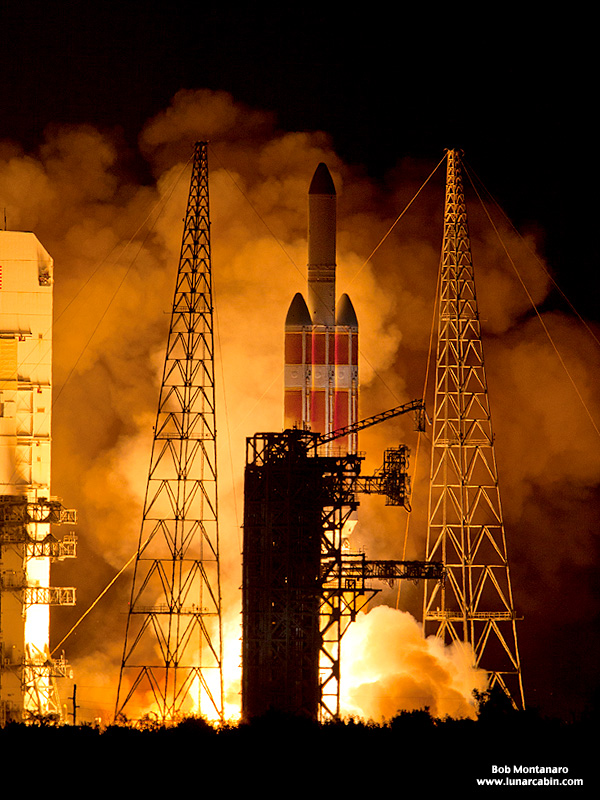 |
|
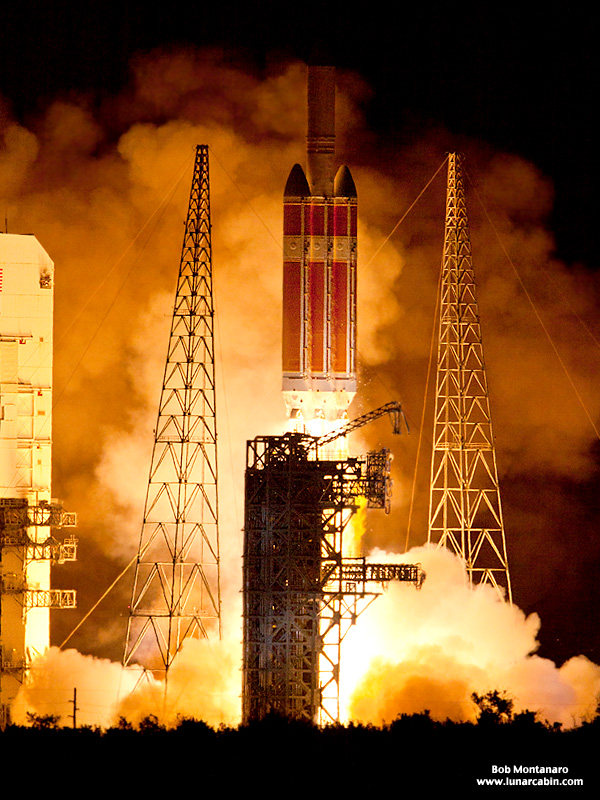 |
|
 |
|
 |
|
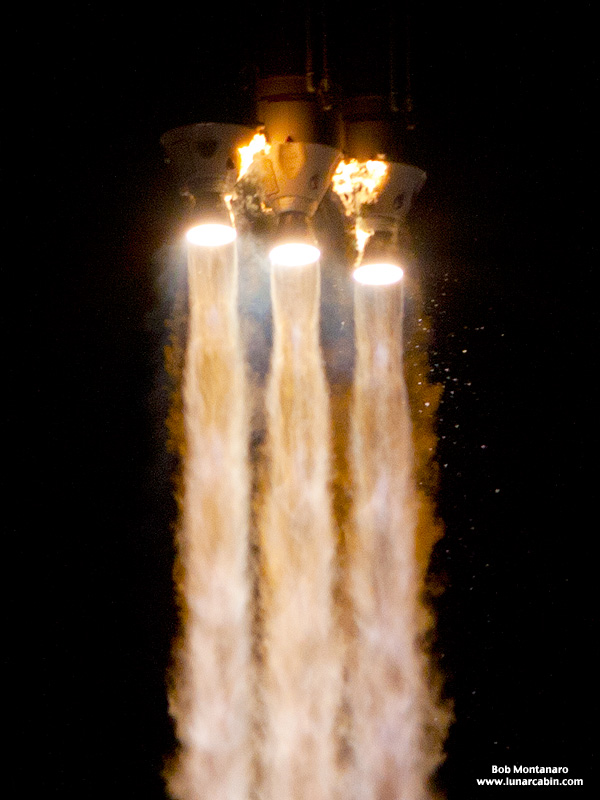 |
|
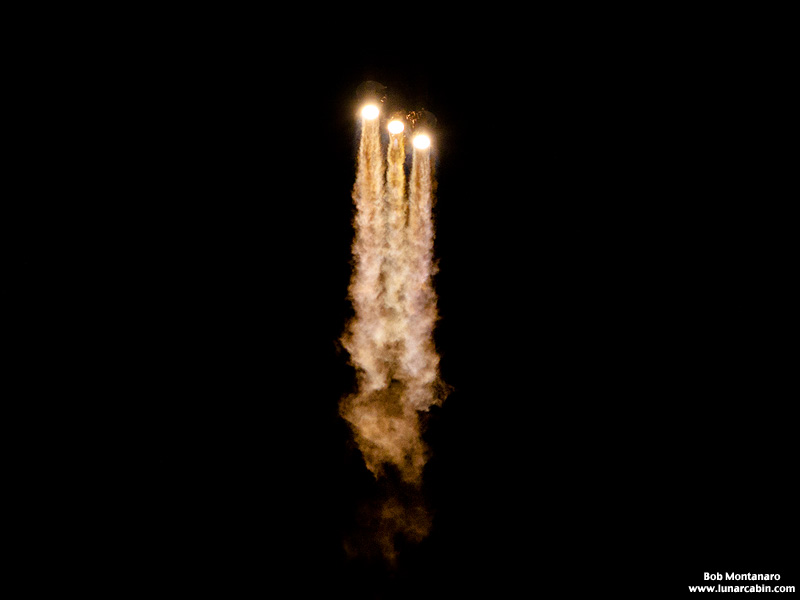 |
|
 |
|
 |
|
| LEFT: A split second flash of light and smoke occurs as the port and starboard boosters are jettisoned. RIGHT: The center booster continues on as just a single star like point of light in the sky. |
|
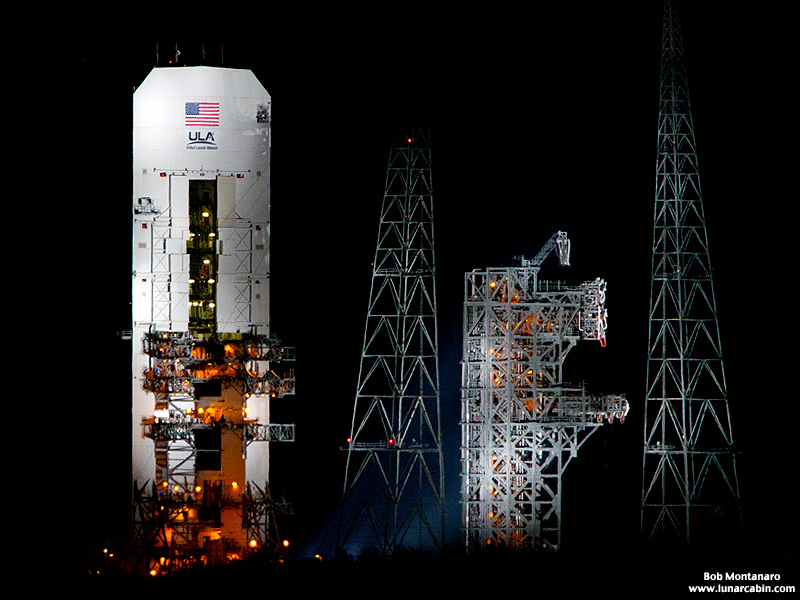 |
|
| Thank you to Dennis Huff inviting me to accompany him to the NASA West Causeway viewing area at Kennedy Space Center from where all these images were taken. | |
All contents copyright Lunar Cabin |
|